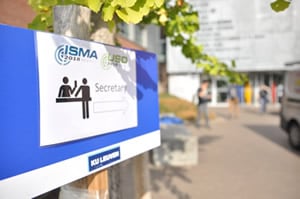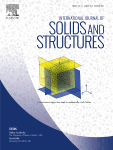 Three members of the Department of Mechanical Engineering-Engineering Mechanics presented at and attended the ISMA-USD Noise and Vibration Engineering conference at KU Leuven in Leuven Belgium. The 28th International Conference on Noise and Vibration engineering (ISMA2018) was organized in conjunction with the 7th International Conference on Uncertainty in Structural Dynamics (USD2018) on September 17-19, 2018. Approximately 700 people (50% from industry, 50% from universities) attended the conference.
Three members of the Department of Mechanical Engineering-Engineering Mechanics presented at and attended the ISMA-USD Noise and Vibration Engineering conference at KU Leuven in Leuven Belgium. The 28th International Conference on Noise and Vibration engineering (ISMA2018) was organized in conjunction with the 7th International Conference on Uncertainty in Structural Dynamics (USD2018) on September 17-19, 2018. Approximately 700 people (50% from industry, 50% from universities) attended the conference.
Jon Furlich, PhD student presented “Application of STFT and Wavelet analysis to MT clunk data: a case study.” Andrew Barnard (ME-EM) presented “Active noise control in pipes and ducts using carbon nanotube thermophones” and “Top 10 mechanical experiments for the teaching of sound and vibration in mechanical engineering”. Barnard also taught a seminar on acoustics in London Sept. 20.
- Furlich, J. E., Blough, J., and Robinette, D. L., ‘Analysis of experimental mt clunk with stft and cwt to observe mode participation and reduction’, Michigan Technological University. ( abstract, full paper )
- Barnard, A., and Senczyszyn, S., ‘Active noise control in pipes and ducts using carbon nanotube thermophones’, Michigan Technological University. ( abstract, full paper )
- Peres, M. A., and Barnard, A., ‘Top 10 mechanical experiments for the teaching of sound and vibration in mechanical engineering’, The Modal Shop, Inc.. ( abstract, full paper )
Read more at ISMA Past Editions.
Jason Blough (ME-EM) chaired a session, attended the conference and met with peers to discuss future research topics.

